
USCGC Mesquite (WAGL/WLB-305) was the lead ship in the Mesquite class of seagoing buoy tenders operated by the United States Coast Guard. She served in the Pacific during World War II, and spent the rest of her Coast Guard career in the Great Lakes. She ran aground and was wrecked in December 1989 off the Keweenaw Peninsula in Lake Superior. She was scuttled nearby as a recreational diving attraction.

The USCGC Acacia (WAGL-406/WLB-406) is an Iris-class 180-foot seagoing buoy tender operated by the United States Coast Guard. Acacia was a multi-purpose vessel, nominally a buoy tender, but with equipment and capabilities for ice breaking, search and rescue, fire fighting, logistics, oil spill response, and other tasks as well. She spent almost all of her 62-year Coast Guard career on the Great Lakes. After decommissioning she became a museum ship in Manistee, Michigan.

USCGC Balsam (WLB-62) was a Cactus-class seagoing buoy tender (WLB) in the United States Coast Guard. She operated in the Pacific Ocean during World War II, then saw service along the United States West Coast, Hawaii, and Alaska. After her decommissioning in 1975, she was repurposed as a crab catcher-processor and is active in Alaskan fisheries as F/V Baranof.

USCGC Maple (WLB-207) is a Juniper-class seagoing buoy tender operated by the United States Coast Guard. She was based at Sitka, Alaska for 16 years and is currently homeported at Atlantic Beach, North Carolina. Her primary mission is maintaining aids to navigation, but she also supports search and rescue, law enforcement, oil spill response, and other Coast Guard missions.

USCGC Bittersweet was a C or Iris-class 180-foot buoy tender of the United States Coast Guard.

The USCGC Evergreen was a Cactus-class seagoing buoy tender operated by the United States Coast Guard. She served in the North Atlantic during World War II and participated in the International Ice Patrol in these waters after the war. She was the first dedicated oceanographic vessel in the Coast Guard's history. She was decommissioned in 1990 and sunk by the US Navy for target practice in 1992.

USCGC Elm (WLB-204) is a U.S. Coast Guard Juniper-class seagoing buoy tender home-ported in Astoria, Oregon. She is responsible for maintaining aids to navigation on the coasts of Oregon and Washington, including the Columbia River.

USCGC Woodrush (WLB-407) was a buoy tender that performed general aids-to-navigation (ATON), search and rescue (SAR), and icebreaking duties for the United States Coast Guard (USCG) from 1944 to 2001 from home ports of Duluth, Minnesota and Sitka, Alaska. She responded from Duluth at full speed through a gale and high seas to the scene of the SS Edmund Fitzgerald sinking in 1975. In 1980, she took part in a rescue rated in the top 10 USCG rescues when she helped to save the passengers and crew of the cruise ship Prinsendam after it caught fire in position 57°38"N 140° 25"W then while being towed sank off Graham Island, British Columbia. She was one of the first vessels to respond to the Exxon Valdez oil spill in 1989. She was decommissioned on 2 March 2001 and sold to the Republic of Ghana to serve in the Ghana Navy.

The USCGC Willow (WLB-202) is a United States Coast Guard seagoing buoy tender, the third of her name and the second of the Juniper-class. She is home-ported in Charleston, South Carolina, where she replaced her sister ship USCGC Oak in servicing 257 aids to navigation in District 7. Willow's area of operations stretches from South Carolina down to Caribbean, including Puerto Rico, Cuba, U.S. Virgin Islands and Haiti. In addition to her primary aids-to-navigation (ATON) role, Willow also performs other duties, such as maritime border security, marine environmental protection, maritime law enforcement, and search and rescue. The Willow transitioned from her former home port of Newport, RI in 2017 after spending over a year in a Baltimore dry dock being refitted and modernized.
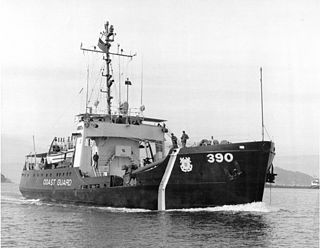
The USCGC Blackhaw (WLB-390) was a Iris-class buoy tender belonging to the United States Coast Guard launched on 18 June 1943 and commissioned on 17 February 1944.
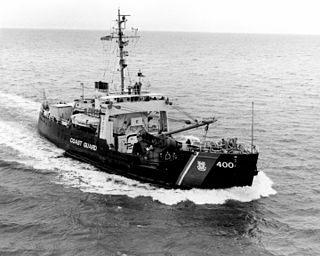
USCGC Salvia (WLB-400) was a United States Coast Guard Iris-class buoy tender in commission from 1944 to 1991. She operated in the Great Lakes and along the United States Gulf Coast during her career. Sold and renamed Brian Davis in 2020 for use as a memorial vessel, she was scuttled as an artificial reef in 2020.

USCGS Katherine Walker (WLM-552) is a Keeper-class coastal buoy tender of the United States Coast Guard. Launched in 1996, she has spent her entire career homeported at Bayonne, New Jersey. Her primary mission is to maintain 335 aids to navigation in New York Harbor, Long Island Sound, and surrounding waters. She is assigned to the First Coast Guard District.

USCGC Ironwood (WAGL-297/WLB-297) was a Mesquite-class sea-going buoy tender operated by the United States Coast Guard. She served in World War II, the Korean War, and the Vietnam War as well as a variety of domestic missions. She currently serves as a seamanship training vessel for Job Corps.
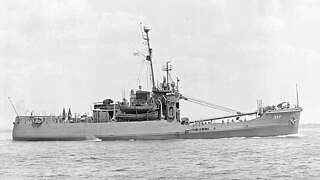
USCGC Planetree (WAGL/WLB-307) was a Mesquite-class seagoing buoy tender operated by the United States Coast Guard. She served during World War II, the Korean War, and the Vietnam War, as well as in a variety of domestic missions.

USCGC Sedge (WAGL-402/WLB-402) was an Iris-class 180-foot seagoing buoy tender operated by the United States Coast Guard. She served in the Pacific during World War II and in Alaska during the rest of her Coast Guard career. Sedge was decommissioned in 2002 and transferred to the Nigerian Navy where she is still active as NNS Kyanwa.
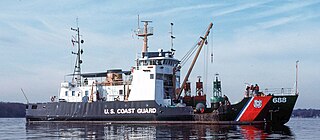
The Red class consisted of five coastal buoy tenders designed, built, owned, and operated by the United States Coast Guard. This was the first new class of buoy tenders built after World War II. It was designed to work in coastal waterways and the major rivers which fed them such as New York Harbor, Chesapeake Bay, and San Francisco Bay. Their primary mission was maintaining aids to navigation, with secondary missions of search and rescue, light icebreaking, law enforcement, and marine environmental protection.

USCGC Red Oak (WLM-689) was a Red-class coastal buoy tender designed, built, owned, and operated by the United States Coast Guard. She was launched in 1971 and homeported at Gloucester City, New Jersey until Coast Guard Base Gloucester was closed in 1988. For the remainder of her career she was home-ported in Philadelphia. Her primary mission was maintaining over 300 aids to navigation in the upper Cheasapeake Bay and its tributaries including the Delaware, North East, Chester, Bohemia, Sassafras, and Susquehanna Rivers, and the C&D Canal. She was also responsible for refueling the Brandywine Shoal lighthouse. Her secondary missions included search and rescue, light icebreaking, law enforcement, and marine environmental protection. Red Oak was initially assigned to the 3rd Coast Guard District, but was later moved to the 5th Coast Guard District when the 3rd was absorbed in a reorganization.
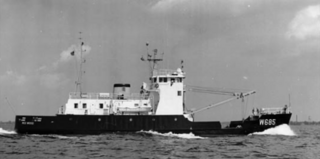
USCGC Red Wood (WLM-685) is a Red-class coastal buoy tender that was designed, built, owned, and operated by the United States Coast Guard. She was launched in 1964 and homeported at New London, Connecticut for most of her career. In March 1996 she moved to Philadelphia where she replaced the decommissioned USCGC Red Oak. Her primary mission while based in New London was maintaining over 200 aids to navigation from Watch Hill, Rhode Island to Execution Rocks at the west end of Long Island Sound. She also provided fuel and water to several lighthouses including the Falkner Island Lighthouse. Her secondary missions included search and rescue, light icebreaking, law enforcement, and marine environmental protection. Red Wood was initially assigned to the 3rd Coast Guard District, but was later moved to the 1st Coast Guard District when the 3rd was absorbed in a reorganization.

USCGC Red Birch (WLM-687) is a Red-class coastal buoy tender that was designed, built, owned, and operated by the United States Coast Guard. She was launched in 1965 and initially homeported at San Francisco. Her primary mission was maintaining 160 aids to navigation in San Francisco, San Pablo, and Suisun Bays, and in the San Joaquin River. Red Birch also brought supplies to the Farallon Island lighthouse. In 1976 the Coast Guard reassigned her to Baltimore, Maryland, where she spent the rest of her career. There she maintained over 300 aids to navigation including several lighthouses. Her secondary missions included search and rescue, light icebreaking, law enforcement, and marine environmental protection.

USCGC Red Cedar (WLM-688) is a Red-class coastal buoy tender that was designed, built, owned, and operated by the United States Coast Guard. She was launched in 1970 and homeported in Norfolk, Virginia. Her primary mission was to maintain over 400 aides to navigation in Chesapeake Bay, Tangier Sound, the Potomac, Rappahannock, York, and James Rivers, and other nearby waterways. Her secondary missions included search and rescue, light icebreaking, law enforcement, and marine environmental protection. She was assigned to the 5th Coast Guard District.




















